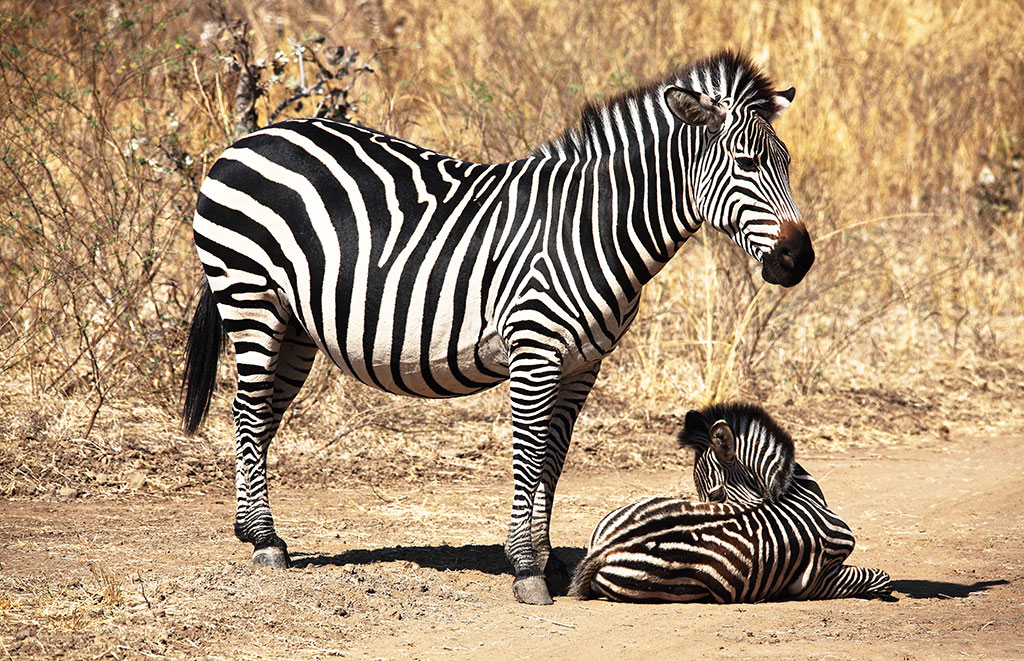ZEBRAS

A relative of the horse family (Equidae) the zebra is a gregarious animal moving in herds of 20 to 100 or more. They often move with wildebeest and occasionally hartebeest or roan antelope. This rather casual symbiosis with other species allows them to pool their defensive alertness and they usually have differing food preferences so grazing is not too competitive. Their gestation period is 12 months and in the wild they have a lifespan of about 20 years.
Interestingly, the stripes of a zebra are unique on each animal, like fingerprints. Burchell’s zebra, the subspecies found in Luangwa Valley, has evenly spaced dark and light stripes as compared to those found in the south and east of Africa, which have broad light stripes with faint shadow stripes between the thin dark lines.
Zebras have shiny coats that dissipate over 70 percent of incoming heat and some scientists believe the stripes help the animals withstand intense solar radiation. The black and white stripes are a form of camouflage called disruptive colouration that breaks up the outline of the body. Although the pattern is visible during daytime, at dawn or in the evening when their predators are most active, zebras look indistinct and may confuse predators by distorting true distance (this is also why a group of zebra is called a ‘dazzle’).
It has always been assumed that the zebra’s stripes are for camouflage but even in woodland cover, this is not convincing, besides which, they often spend their time on open grasslands where they are very conspicuous because of their stripes. The theories are that it serves to create an optical illusion of them being larger than they are, to confuse predators of their exact position when striking or to dazzle their enemies.
Family groups are stable members maintaining strong bonds over many years. Mutual grooming, where zebras stand together and nibble the hair on each other’s neck and back, helps develop and preserve these bonds. Family members look out for one another: if one becomes separated from the rest, the others search for it. The group adjusts its travelling pace to accommodate the old and the weak.
Family groups are stable members maintaining strong bonds over many years. Mutual grooming, where zebras stand together and nibble the hair on each other’s neck and back, helps develop and preserve these bonds.
Family members look out for one another: if one becomes separated from the rest, the others search for it. The group adjusts its travelling pace to accommodate the old and the weak.
Zebras are significant prey for lions and hyenas, and to a lesser extent for wild dogs, leopards and cheetahs.

When a family group is attacked, the members form a semi-circle, face the predator and watch it, ready to bite or kick should the attack continue. If one of the family is injured the rest will often encircle it to protect it from further attack. A kick from a zebra can break a lion’s jaw.
Zebras are found in most of the national parks in Zambia and in abundance in South Luangwa.
